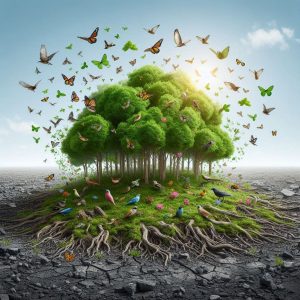
Nature’s Resilience: Reversing Human-Caused Damage
Nature possesses an extraordinary ability to mend itself when given the right care and attention. Around the world, innovative projects are demonstrating how we can assist nature in its healing process. Imagine coral reefs, once bleached and barren, now flourishing with vibrant marine life again. Through advanced techniques, scientists are planting resilient coral species that can withstand higher temperatures, reviving these underwater ecosystems.
In another remarkable example, vast forests once ravaged by wildfires are being rejuvenated. By employing fire-proofing methods and carefully managed burns, new growth is encouraged, restoring the forest’s health and biodiversity. Similarly, landscapes scarred by human activities, such as mining and deforestation, are being rehabilitated through strategic planting and soil restoration techniques, bringing life back to these barren areas.
These efforts show that, with the right approach, we can not only halt environmental damage but actively reverse it. By working hand-in-hand with nature, we can witness its incredible power to heal and regenerate, restoring balance and creating a thriving environment for future generations.
Restoring Damaged Ecosystems
The article highlights successful restoration projects around the world, showcasing how damaged ecosystems can be revived. Examples include restoring coral reefs using innovative techniques, fire-proofing forests to prevent wildfires, and rehabilitating landscapes affected by human activities. These initiatives demonstrate that with the right approaches, it’s possible to repair and rejuvenate ecosystems, bringing them back to their natural, thriving states.
“Here Are Four Good Examples of How to Reverse Environmental Damage” from Bloomberg
The article “Here Are Four Good Examples of How to Reverse Environmental Damage” from Bloomberg Green discusses successful restoration projects around the world 1. It highlights four initiatives that have effectively repaired damaged ecosystems, including restoring coral reefs, fire-proofing forests, rehabilitating landscapes affected by human activities, and other innovative approaches 1. The article emphasizes the importance of understanding what makes a good restoration project and showcases how these efforts can bring damaged ecosystems back to their natural, thriving states 1.
- Citations from the source article titled; “Here Are Four Good Examples of How to Reverse Environmental Damage” from Bloomberg
